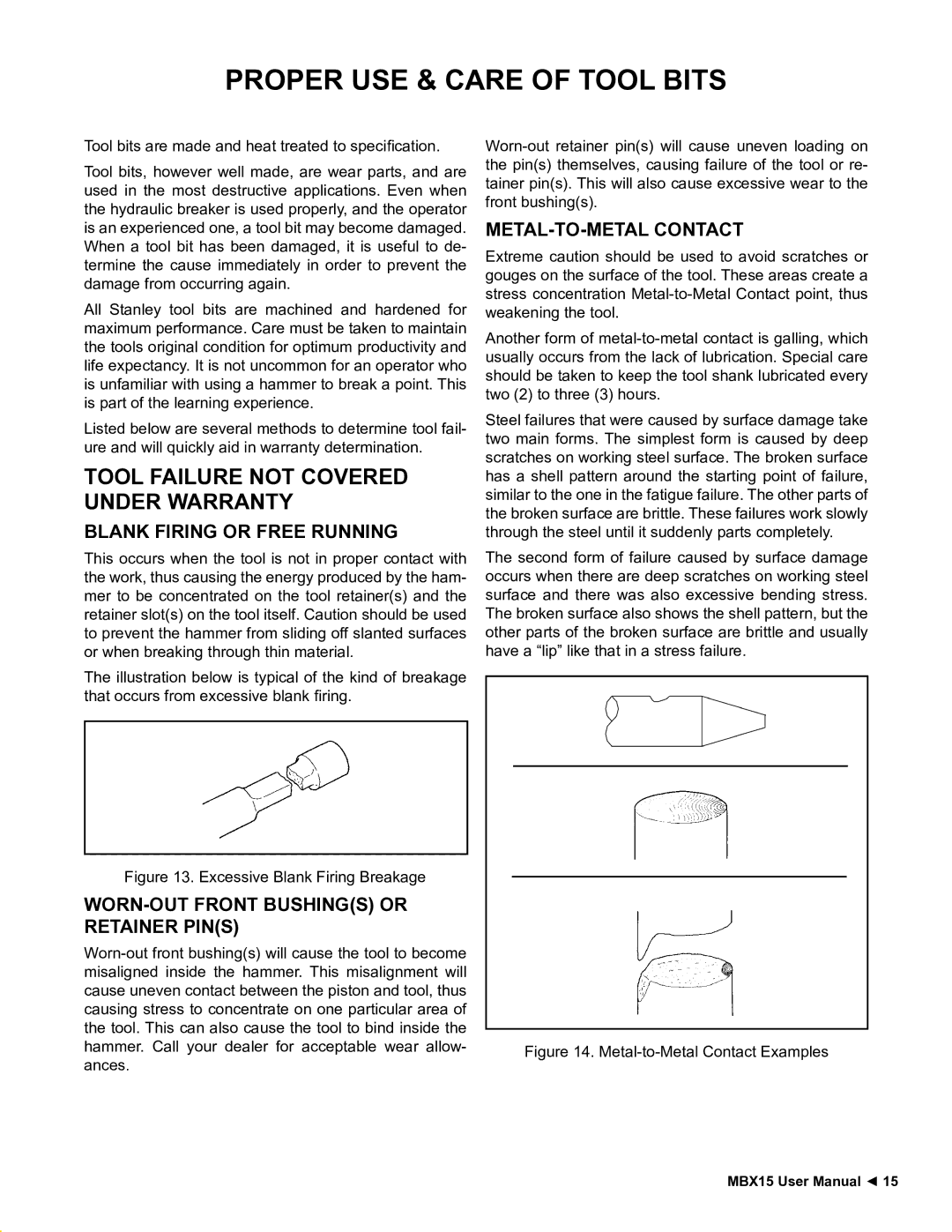MBX15 specifications
The Stanley Black & Decker MBX15 is a robust and versatile tool designed for professionals and serious DIY enthusiasts alike. Engineered to meet the needs of various applications, this machine stands out in the crowded marketplace of power tools, providing exceptional reliability and performance.At the heart of the MBX15 is its powerful motor, which delivers impressive torque and speed, enabling users to tackle a wide range of tasks with ease. The efficiency of this motor allows for quick job completion without sacrificing quality. One of the standout features of the MBX15 is its lightweight design, making it easy to handle during extended use. The ergonomically designed handle ensures maximum comfort, reducing fatigue and enhancing user control.
The MBX15 incorporates advanced technologies that set it apart from its competitors. For instance, it features an innovative vibration-dampening system that minimizes user discomfort. This technology is especially beneficial during prolonged operations, allowing for greater precision and fewer errors. Additionally, the tool is equipped with a quick-change system, enabling users to switch attachments seamlessly, thus enhancing productivity.
A distinctive characteristic of the MBX15 is its versatility. It comes with a variety of attachments specifically designed for different applications such as grinding, polishing, and even surface preparation. This multifunctionality makes it an essential addition to any workshop or job site.
The MBX15 also prioritizes safety, incorporating several features to protect users during operation. The integrated safety switch prevents accidental start-ups, and the durable housing safeguards the internal components, ensuring longevity and reliability even in demanding environments.
In terms of design aesthetics, the MBX15 boasts a sleek and modern look, complete with a sturdy build that reflects the quality synonymous with the Stanley Black & Decker brand. This tool not only delivers on performance but also complements the professionalism of its users.
In conclusion, the Stanley Black & Decker MBX15 is a formidable tool equipped with a powerful motor, innovative technologies, and a user-friendly design. Its versatility, coupled with safety features and comfort, makes it an exceptional choice for any project, whether on a professional job site or at home. With its blend of power and efficiency, the MBX15 is truly a reliable partner for all your grinding and surface preparation needs.

